#traditional dance
Photo
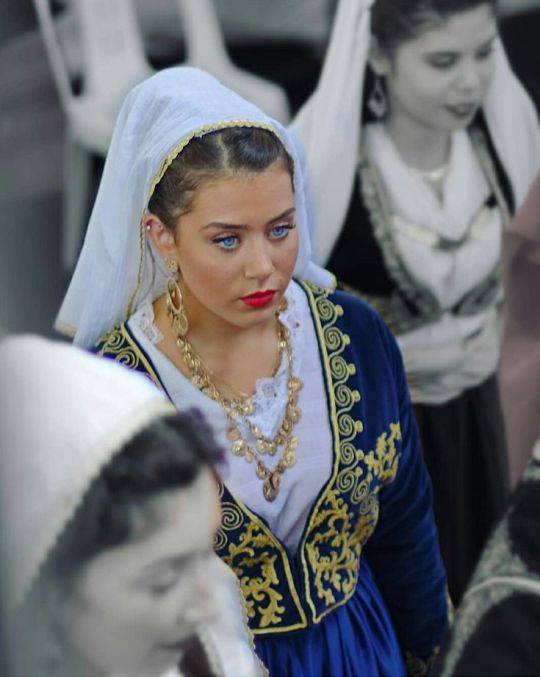
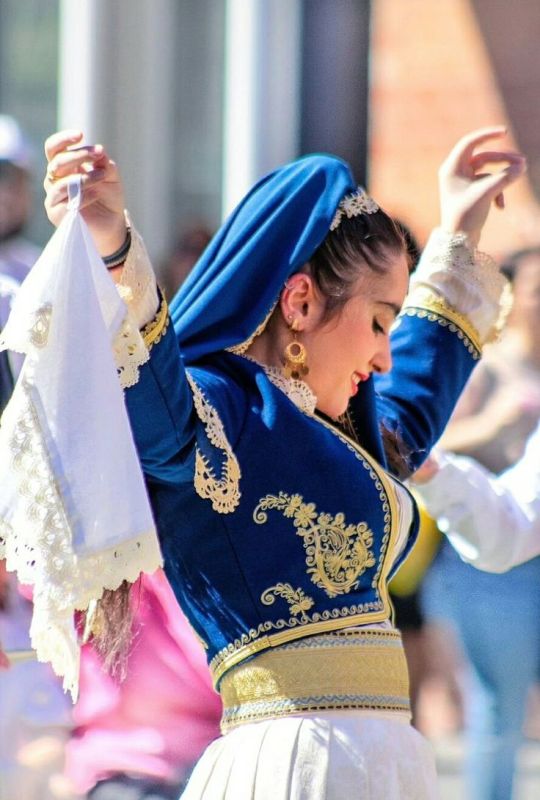
Blue & white traditional Greek dresses. Photos by pontian69 on Instagram.
#greece#europe#historical fashion#fashion#traditional dress#traditional dance#traditional clothing#folk clothing#folk dress#embroidery#greek culture#crete#greek islands
149 notes
·
View notes
Text
Types of Traditional Thai Dance in Man Suang
We see two styles of traditional Thai dance-drama (Lakhon Ram) in Man Suang: Lakhon Nok and Lakhon Nai.
Lakhon Nok
The film opens with Khem performing the role of Sang Thong in what looks like a local event for a lord.

And we also see him in the iconic golden outfit for his performance as Phra Lor.
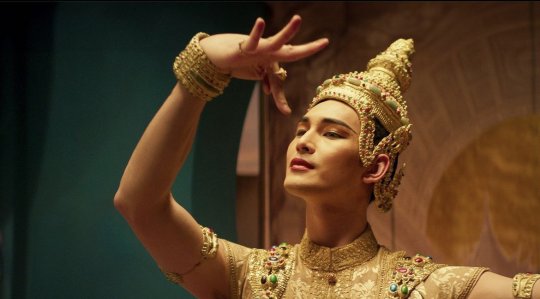
Lakhon Nok is traditionally a folk style dance drama performed by commoners.
The theatre took place away from royal palaces and was often performed at temple fairs.
Originally, Lakhon Nok was an all male dance style but these days women perform it too.
The stories are fast paced and the movements are typically more relaxed and not as refined as those you would find in Lakhon Nai or Khon, the two dance styles most associated with royal performance.
Costumes can be very simple or more elaborate.
The stories are often based on Buddhist Jataka tales and folklore with fantastical creatures like ogres, mermaids and spirits in abundance.
Traditionally any kind of story could be told except The Ramakien, Inao and Unnarut, which were reserved for royal performances of Lakhon Nai or Khon.
Popular examples of Lakhon Nok include:
Sang Thong
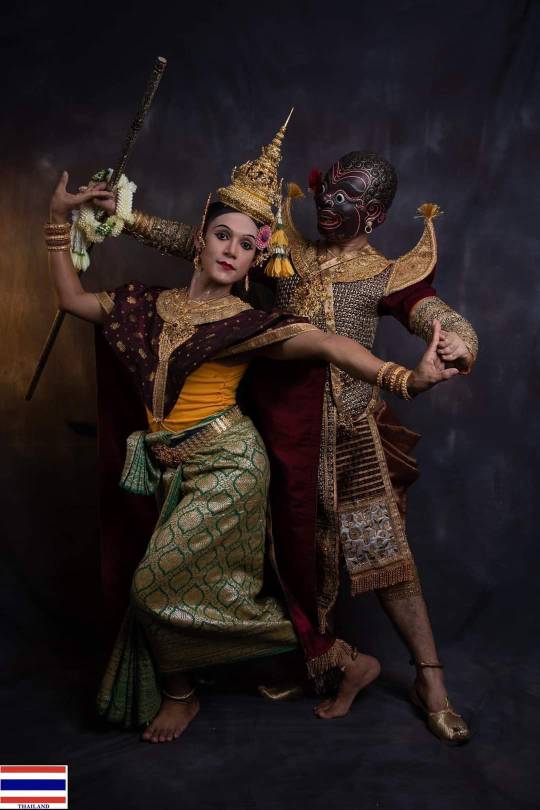
Phra Lor/Law
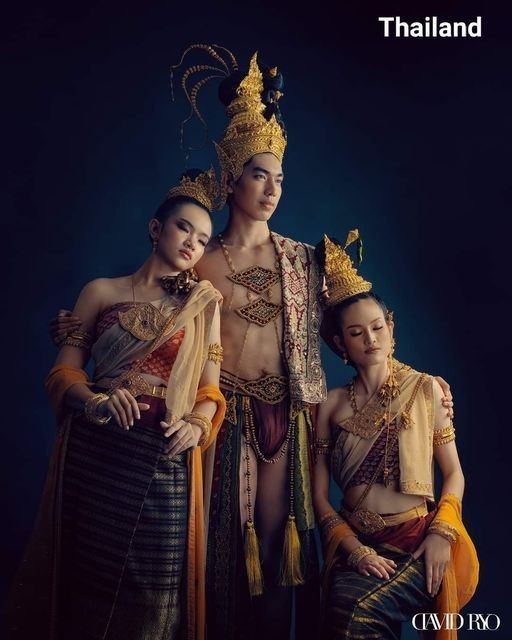
Phra Aphai Mani

Lakhon Nai
Wichiendej asks to see Khem as Inao, the hero of the Lakhon Nai dance drama.

Lakhon Nai was originally performed exclusively for the royal court by an all female group.
We do overhear Mae Kru Phikul arguing about this in the background of one scene. Shortly after this time period men would be allowed to perform in Lakhon Nai as well but I imagine it was still quite a transgressive act in this tumultuous time frame.
Only the king and members of his court were allowed to watch but during this time period, Rama 3 turned against royal dance as an art form and ordered a stop to both Lakhon Nai and Khon performances. This is likely the reason that Mae Kru Phikul ends up at Man Suang.
Characteristics of Lakhon Nai include extremely refined dance movements, adhering to traditional Thai aesthetic principles.
This is why we see Khem going to such drastic measures in his training montage, because he would be required to dance to a much more technical higher standard than he would have had to do when performing Lakhon Nok plays.
Costumes are elaborate and exquisite as befits a royal court.
The plots of Lakhon Nai come from three stories:
The Ramakien (a Thai version of the Ramayana)
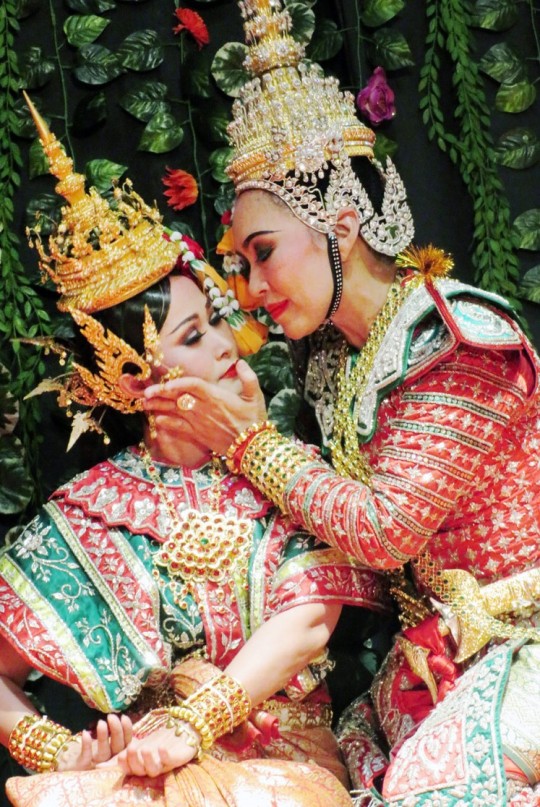
Inao (The prince of the Panji tales.)

Unnarut (stories of the son of Krishna.)
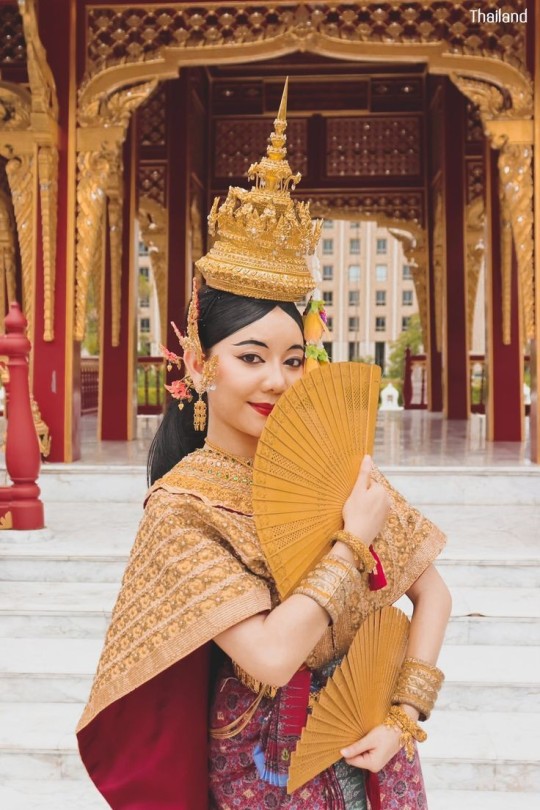
There are other types of Lakhon dance styles but these are the two that are showcased in Man Suang.
I was a little surprised we didn't see Khon, the famous masked dance drama style of Thailand but it was another dance form originally exclusive to royal courts so I can also understand why it didn't show up in the film.
#man suang fic inspiration#man suang meta#mansuang#man suang#thai dance#traditional dance#lakhon nai#lakhon nok#lakhon ram
171 notes
·
View notes
Text
One of the figures in Catalan traditional festivities like festes majors are these big-headed characters. They are called different names depending on the area: cabeçuts, capgrossos, cabuts, cabets, caparrots, nanos or nanets. All these words derive from the concepts of "big head" or "short person", since that's their most iconic characteristic.
They're hollow paper-mache figures where the dancer puts their head in, and sees through the figure's mouth. They dance usually cheerful songs and greet the people who are watching, particularly children.
The figures can represent stereotypical people from the town (a school child, a rich man, a priest, a farmer, a heiress, etc), local historical or legendary people (nobles, pirates, etc), or just silly people. In some places, if someone from the town/city becomes famous or does something very good for the town, people can choose to make a capgròs that represents them.
If I'm not mistaken, this figures also exist in Basque culture, where they are called buruhandiak or kilikiliak (am I right, @beautiful-basque-country?)
Video by Agrupació de Balls Populars de Sitges taken in the national meet-up of cabeçuts from around Catalonia.
#festa major#tradicions#capgrossos#cabeçuts#cabuts#cabets#caparrots#nanos#nanets#cultures#culture#ethnography#festivity#festival#europe#folk culture#folklore#travel#folk dance#traditional dance
201 notes
·
View notes
Text
Karička🇸🇰
By folk dance group Lúčnica❤️
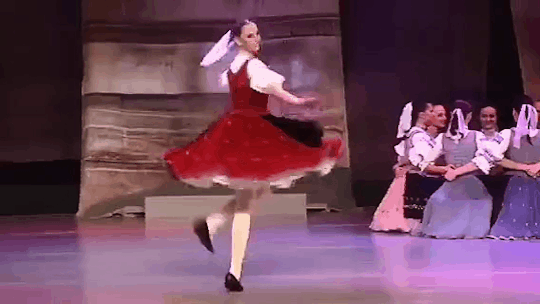
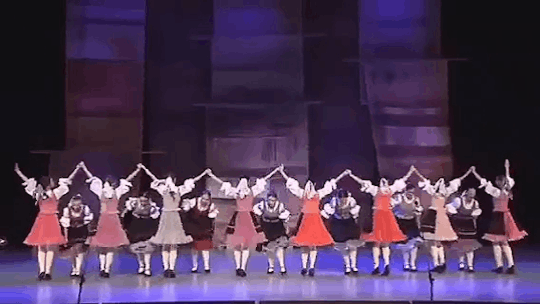


Karička is a traditional circle dance found today in Eastern Slovakia❤️
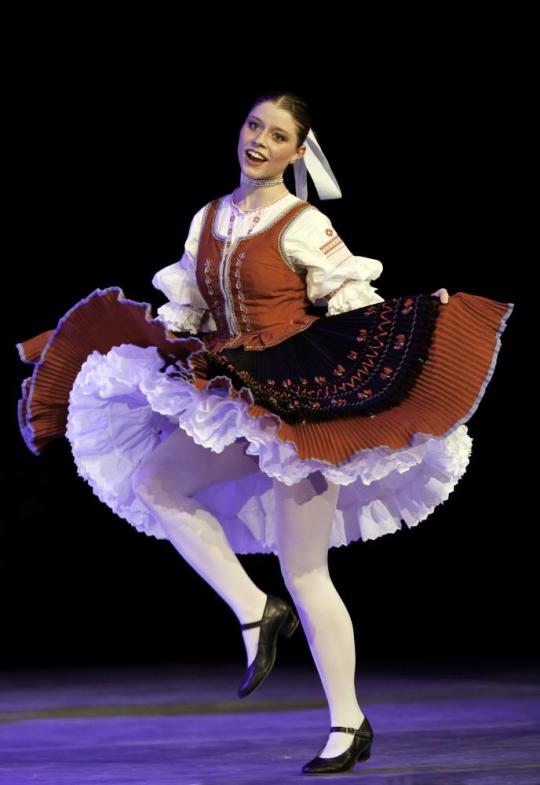

The dresses seem to be inspired from Zemplín region in South East of Slovakia❤️
#folk#folklore#folk dance#tradition#traditional dance#slovak#slovakia#slavic#slavic culture#slavic tradition
194 notes
·
View notes
Text

People perform a traditional dance during the opening ceremony of the Thingyan Water Festival in Yangon, Myanmar, 13 April 2024. The annual water festival, known as Thingyan in Myanmar, sees people gathering to celebrate by splashing water and throwing powder at each other as a symbol of cleansing and washing away the sins from the past year. The festival marks the start of the traditional New Year and is similarly celebrated in countries such as Myanmar, Thailand, Laos and Cambodia.

Mizzima Myanmar News
#myanmar#burma#Burmese#thingyan#new year#Cambodia#Thailand#Laos#dance#traditional dance#se asia#southeast asia#water festival
21 notes
·
View notes
Text
181 notes
·
View notes
Text
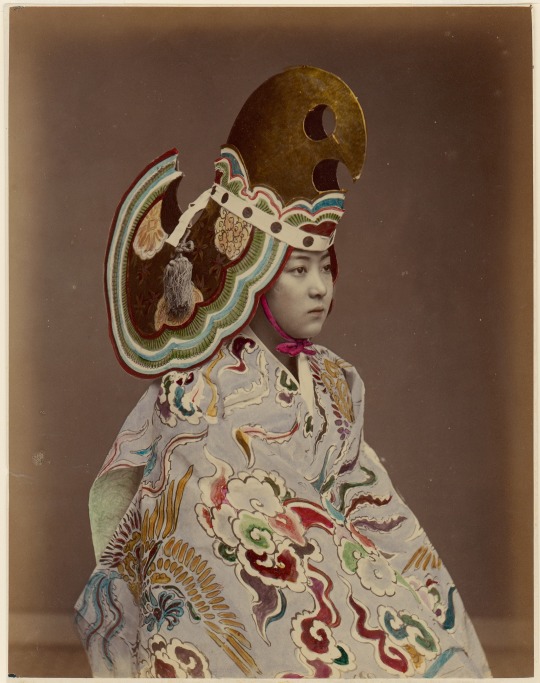
Unknown photographer (Japanese)
Performer in Bugaku-style Costume
1880s
#japanese photography#vintage photography#dance#Japanese dance#asian art#asian culture#japanese culture#japanese art#dancers#traditional dance#art history#art on tumblr#photography on tumblr#aesthetictumblr#tumblraesthetic#tumblrpic#tumblrpictures#tumblr art#aesthetic#beauty
38 notes
·
View notes
Text
The best tiktok from the meme "what I learned instead of martial arts" goes to Cretans!
44 notes
·
View notes
Text
Blue-Green Mountains and Rivers
The blue-green shan shui (simplified Chinese: 青绿山水; traditional Chinese: 青綠山水; pinyin: Qīng-Lǜ Shān-Shuǐ), is a Chinese painting style of "shan shui". The main colours of the paintings are blues and greens. (Source)

Emperor Minghuang's Journey to Sichuan; a blue-green shan shui painting depicting the flight of Emperor Xuanzong from Chang'an, a late Ming Dynasty painting after an original by Qiu Ying (1494–1552).
.
The aesthetic brought on by this art style is acknowledged and celebrated to this day. Probably the most notable example would be this dance last year, that imitated the blue-green mountains using a clever combination of dyed clothing and choreography.
youtube
.
There are cosplays like this too, paying homage to the style.
.
See 19:50 mark for a whole CAKE!
youtube
.
And in the currently airing Cdrama New Life Begins, there's a whole sequence of a banquet held with a blue-green shan shui diorama as the backdrop! (End of episode 5 and beginning of ep 6)
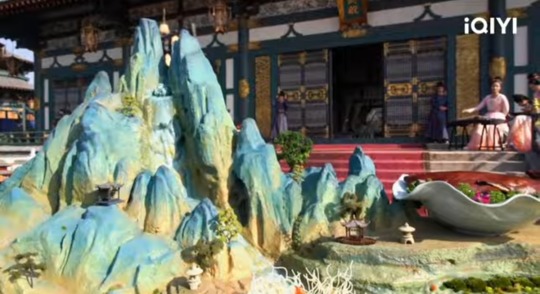
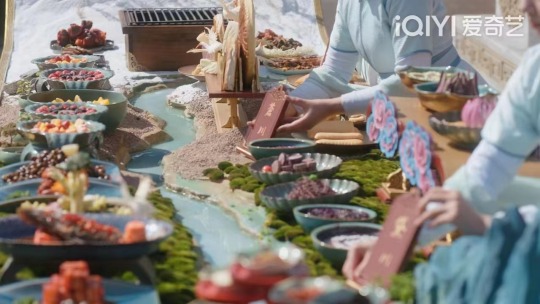
.
If you know of more examples please feel free to share!😍
.
More posts by me
#food#cdramanet#history#cdrama#chinese drama#new life begins#Youtube#blue-green shan shui#卿卿日常#traditional art#traditional dance#Bite of Canton#青绿山水#青綠山水#Qīng-Lǜ Shān-Shuǐ
376 notes
·
View notes
Text
Samke Mumu Mwelase (@ samku_mumu)
#Samke Mumu Mwelase#Samke Mumu#Samke Mwelase#samku_mumu#south africa#mzansi#africa#beauty#curvy#thick#black beauty#melanin#traditional dance
22 notes
·
View notes
Text
L.U.C. & Rebel Babel Film Orchestra feat. Tęgie Chłopy - Miłosny Opętani...
youtube
❤️
#I'm so proud of everyone involved in this masterpiece of a movie!#Chłopi#The Peasants#Władysław Reymont#polish folklore#polish literature#traditional dance#Youtube
33 notes
·
View notes
Text

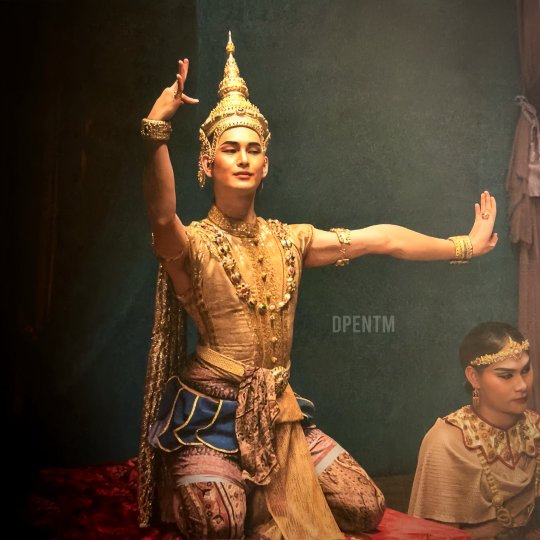







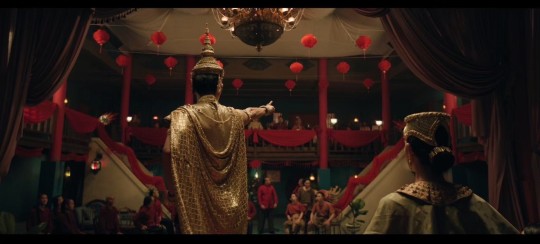
💛💛💛
Khem as Phra Law
If you've not seen Phra Lo's fine face
Just view the moon, they are the same!
💛💛💛
#man suang fic inspiration#man suang#khem#apo nattawin#golden khem#thai dance#mansuang#thai film#lakhon nok#traditional dance#traditional thai costume
154 notes
·
View notes
Text

The best man at a wedding in Laikipia County, Kenya, dances wearing traditional Samburu clothing.
6 notes
·
View notes
Text
The Eagle's dance in Solsona, Central Catalonia. Video: landscape_the_world for Turisme Solsona.
In the Catalan tradition, eagles are a majestic animal. They're the most solemn animal out of all the bestiary. Ever since the Middle Ages, Eagle dances have been performed in Catalonia's most noble occasions, for example when a king of Catalonia-Aragon was crowned.
If you follow this blog, you'll have seen how the bestiary (both legendary dragons and beasts and real animals like the eagle, owl, mule, etc., each town or city has their own) are part of traditional Catalan festivities like festa major and corpus. In these holidays, the bestiary are part of the dances that parade on the streets.
Though towns and cities have their own bestiary, not all are allowed to have an Eagle. Only those with the old title of "city" have one. The Eagle always wears a crown on its head and is carried by only one person. Its dance is slower and serious, which makes it stand out from other bestiary figures with more upbeat and cheerful dances.
Many eagles around the country are still used in the festivities, but very few preserve their oldest primordial use: paying homage to those considered worthy of it. Traditionally, the highest homage that a city could pay to a host was sending the Eagle to dance in front of them.
Solsona's Eagle is among the few that still keep this use. The Eagle represents the city authorities and has a strict protocol. It performs its solemn dance 3 times during festa major, on corpus, and also when a high authority visits Solsona and when a new bishop is sworn.
In the video above, you can see the Solsona Eagle performing. It has precise foot movements and ends in a bow.
(A couple of years ago we also posted the dance of Barcelona's Eagle. You can see the post clicking here.)
#tradicions#solsona#catalunya#catalonia#history#medieval#eagle#bestiary#dance#traditional dance#folk dance#folk culture#europe#travel#ethnography#culture#cultures#catalan culture#folklore
112 notes
·
View notes
Text
Beryl McBurnie
youtube
Beryl McBurnie was born in 1913 in Port of Spain, Trinidad. McBurnie is considered by many to be the "grande dame" of Carribean dance. At a time when Trinidadian steel bands and folk dance were looked down upon, McBurnie promoted their recognition. In 1948, she established the Little Carib, Trinidad's first theater. McBurnie's dance company toured internationally and her work influenced dancers in the Caribbean and elsewhere. In 1989, she received the Trinity Cross, Trinidad and Tobago's highest honor.
Beryl McBurnie died in 2000 at the age of 86.
12 notes
·
View notes
Text
Historical Africa
If you haven't heard of it already, please check out the Historical Africa YouTube channel. I just discovered it and it's a treasure trove of great information about African history - something we could all stand to learn a lot more about (and yes, I mean ALL of us).
Check it out!
youtube
9 notes
·
View notes